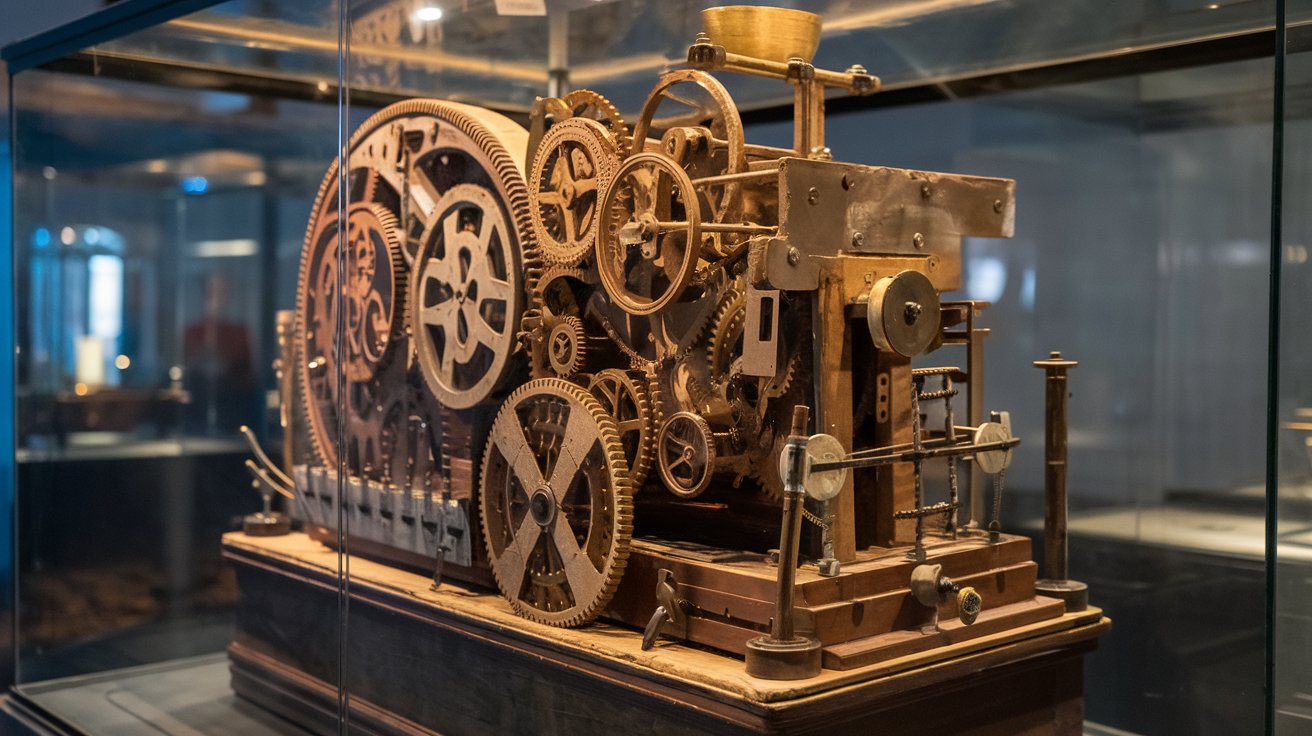
What is the Antikythera Mechanism? Imagine stumbling upon an ancient artifact that resembles a shoebox-sized puzzle of gears and inscriptions. This is the Antikythera Mechanism, often hailed as the world's first analog computer. Discovered in 1901 by sponge divers off the Greek island of Antikythera, this bronze device dates back to around 100 BCE. Its intricate design, featuring 30 gear wheels, was used to predict astronomical events like lunar and solar eclipses, track planetary positions, and even schedule the Olympic Games. The mechanism's precision and complexity reveal the advanced scientific knowledge of ancient Greece, making it a marvel of engineering and astronomy.
Key Takeaways:
- The Antikythera Mechanism, a marvel of ancient engineering, was discovered in 1901 off the coast of a Greek island. It accurately tracked astronomical phenomena and reflected the advanced knowledge of ancient Greek scientists and craftsmen.
- Recent research and technological advancements have shed new light on the Antikythera Mechanism's intricate design and functionality, revealing its cultural, educational, and historical significance. Its legacy endures through ongoing conservation efforts and international interest.
The Discovery of the Antikythera Mechanism
The Antikythera mechanism is a marvel of ancient engineering, discovered over a century ago. Its origins and the story behind its unearthing are as fascinating as the device itself.
- The Antikythera mechanism was discovered in 1901 by sponge divers exploring a shipwreck off the coast of Antikythera, a small Greek island in the Aegean Sea.
- The initial find included a large, rocky slab containing a part of a gear wheel, which was later identified as part of a complex mechanical device.
- Named after the island where it was found, the Antikythera mechanism's name has stuck, even though it was likely created elsewhere, possibly Rhodes.
Dating and Construction
Understanding when and how the Antikythera mechanism was made provides insight into the technological prowess of ancient Greece.
- The mechanism is dated to around 100 BCE, give or take 30 years, placing it firmly in the Hellenistic period.
- Fabricated from bronze sheet, the device was assembled into a case roughly the size of a shoebox, with doors and faces covered in Greek inscriptions.
- Containing 30 gear wheels, the mechanism's complexity allowed it to mimic the Moon's erratic orbit and follow the motions of the Moon and Sun across the zodiac.
Astronomical Functions and Accuracy
The Antikythera mechanism's primary purpose was to track and predict astronomical phenomena with remarkable precision.
- Designed to calculate and display information about lunar and solar eclipses, planetary positions, and the timing of the Olympic Games.
- The device was impressively accurate, with planetary motion calculations accurate to within one degree in 500 years.
- Inscriptions on the device reference various astronomical cycles, such as the Metonic cycle (a 19-year cycle used to regulate calendars) and the saros eclipse cycle (an 18.2-year cycle used to predict eclipses).
Possible Inventors and Purpose
Speculation surrounds who created the Antikythera mechanism and what it was used for.
- Often attributed to Hipparchus, a renowned ancient astronomer, though new research suggests it might have been created in a workshop or family business.
- The exact purpose remains speculative; it could have been used in a temple or school for educational purposes or as a fancy curio for a wealthy family.
Archaeological and Historical Significance
The Antikythera mechanism stands as a testament to the ingenuity of ancient Greek scientists and craftsmen.
- It is the only known physical survivor of a long tradition of mechanical astronomical displays, with references to similar devices found in Greco-Roman literature.
- An international collaborative effort, supported by Greece’s Hellenic Ministry of Culture, is dedicated to studying the mechanism.
- At least 10 replicas have been built since Derek de Solla Price first constructed one in the 1950s, aiding in understanding the device's mechanics.
Modern Research and Discoveries
Recent technological advancements have shed new light on the Antikythera mechanism's intricate design and functionality.
- In 2008, a team at Cardiff University used X-ray tomography and high-resolution surface scanning to image inside fragments of the mechanism, revealing detailed inscriptions and further clarifying the gear system.
- Likely created during a time when Greek scientists were actively engaged in astronomical research, the device's sophistication suggests it was part of a broader cultural and scientific movement.
References in Ancient Literature
Ancient texts provide clues about the existence and use of devices similar to the Antikythera mechanism.
- Marcus Tullius Cicero mentioned a planetary device constructed by Posidonius, who took over Hipparchus’s school on Rhodes after his death.
- The construction required advanced mechanical design skills, likely possessed by skilled Greek craftsmen.
Tracking Astronomical Cycles
The Antikythera mechanism's dials and gears were designed to track various important astronomical cycles.
- The mechanism includes dials for tracking the Metonic cycle and the saros eclipse cycle, crucial for predicting celestial events.
- Symbols on the device indicate months with a likelihood of solar or lunar eclipses, based on the 18.2-year saros eclipse cycle.
Planetary Motion and Lunar Phases
The device's ability to track planetary positions and lunar phases showcases its advanced design.
- It includes hands or pointers for Mercury, Venus, Mars, Jupiter, and Saturn, used to track the positions of these planets across the zodiac.
- A rotating ball shows the phases of the moon, part of the intricate gear system that mimics the Moon's erratic orbit.
Cultural and Educational Significance
The Antikythera mechanism also had cultural and educational applications, reflecting its creators' broad understanding of the world.
- One of the dials shows when various Panhellenic games should take place, including the ancient Olympic Games, part of a four-year cycle.
- The mechanism has garnered significant international interest, with numerous articles, books, and documentaries dedicated to its study.
Conservation and Legacy
Efforts to preserve and understand the Antikythera mechanism continue, ensuring its legacy endures.
- The fragments are housed in the National Archaeological Museum in Athens, with ongoing conservation efforts and advanced imaging techniques helping to decipher inscriptions and understand the device's mechanics.
The Legacy of the Antikythera Mechanism
The Antikythera mechanism stands as a testament to the ingenuity of ancient Greek scientists. Discovered in 1901, this bronze device, dating back to around 100 BCE, showcases advanced astronomical knowledge and mechanical design. With 30 intricate gear wheels, it could predict lunar phases, solar eclipses, and even the timing of the Olympic Games. Its precision, accurate to within one degree over 500 years, is mind-blowing. The inscriptions reveal knowledge of cycles like the Metonic and saros eclipse cycles. Though its exact purpose remains speculative, it likely served educational or ceremonial roles. Today, housed in the National Archaeological Museum in Athens, the mechanism continues to inspire and intrigue researchers worldwide. Its legacy underscores the advanced scientific achievements of ancient civilizations, reminding us of the rich history of human innovation.
Frequently Asked Questions
Was this page helpful?
Our commitment to delivering trustworthy and engaging content is at the heart of what we do. Each fact on our site is contributed by real users like you, bringing a wealth of diverse insights and information. To ensure the highest standards of accuracy and reliability, our dedicated editors meticulously review each submission. This process guarantees that the facts we share are not only fascinating but also credible. Trust in our commitment to quality and authenticity as you explore and learn with us.


